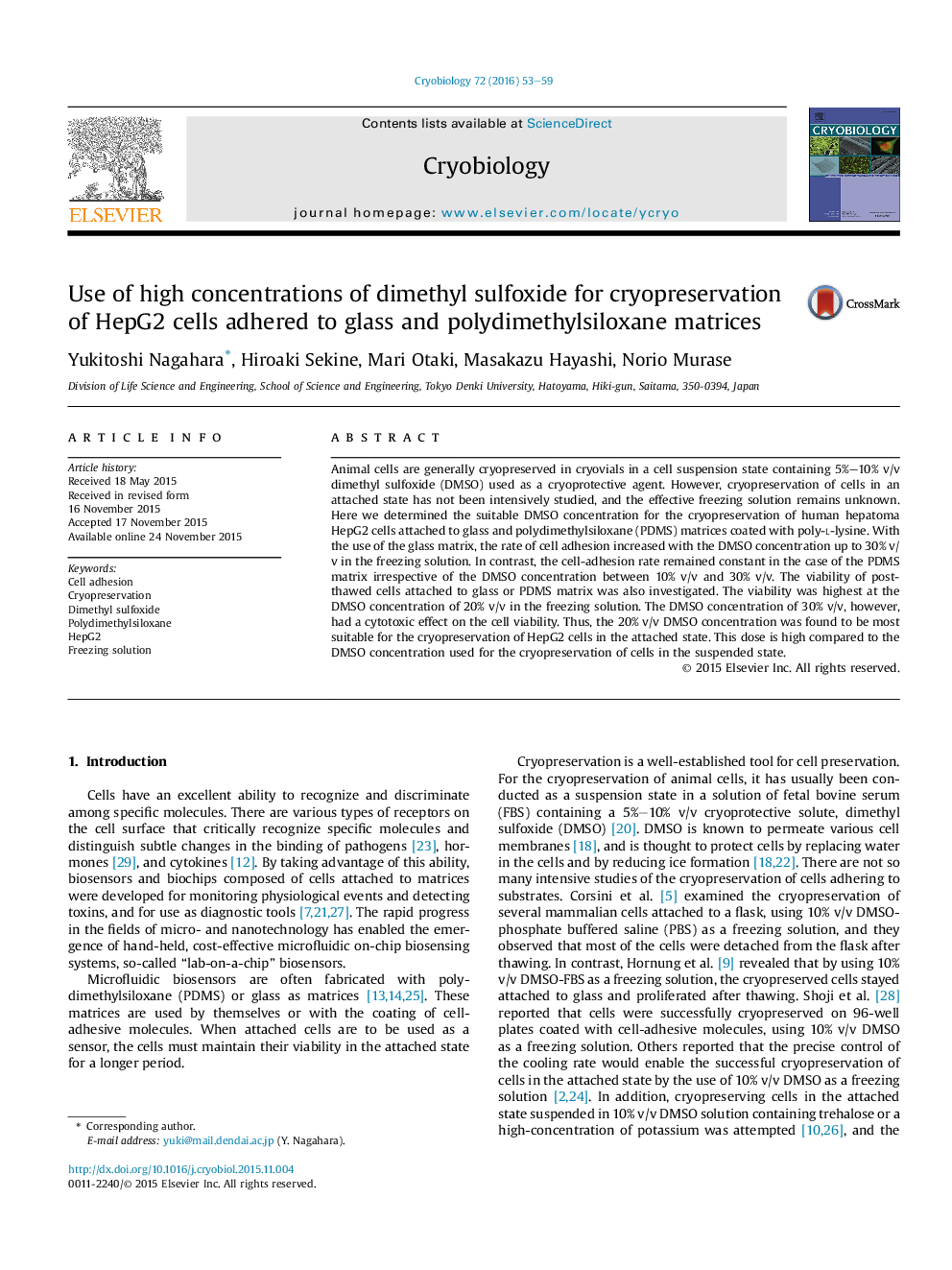| Article ID | Journal | Published Year | Pages | File Type |
|---|---|---|---|---|
| 10927640 | Cryobiology | 2016 | 7 Pages |
Abstract
Animal cells are generally cryopreserved in cryovials in a cell suspension state containing 5%-10% v/v dimethyl sulfoxide (DMSO) used as a cryoprotective agent. However, cryopreservation of cells in an attached state has not been intensively studied, and the effective freezing solution remains unknown. Here we determined the suitable DMSO concentration for the cryopreservation of human hepatoma HepG2 cells attached to glass and polydimethylsiloxane (PDMS) matrices coated with poly-l-lysine. With the use of the glass matrix, the rate of cell adhesion increased with the DMSO concentration up to 30% v/v in the freezing solution. In contrast, the cell-adhesion rate remained constant in the case of the PDMS matrix irrespective of the DMSO concentration between 10% v/v and 30% v/v. The viability of post-thawed cells attached to glass or PDMS matrix was also investigated. The viability was highest at the DMSO concentration of 20% v/v in the freezing solution. The DMSO concentration of 30% v/v, however, had a cytotoxic effect on the cell viability. Thus, the 20% v/v DMSO concentration was found to be most suitable for the cryopreservation of HepG2 cells in the attached state. This dose is high compared to the DMSO concentration used for the cryopreservation of cells in the suspended state.
Related Topics
Life Sciences
Agricultural and Biological Sciences
Agricultural and Biological Sciences (General)
Authors
Yukitoshi Nagahara, Hiroaki Sekine, Mari Otaki, Masakazu Hayashi, Norio Murase,
